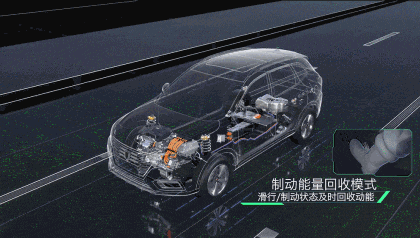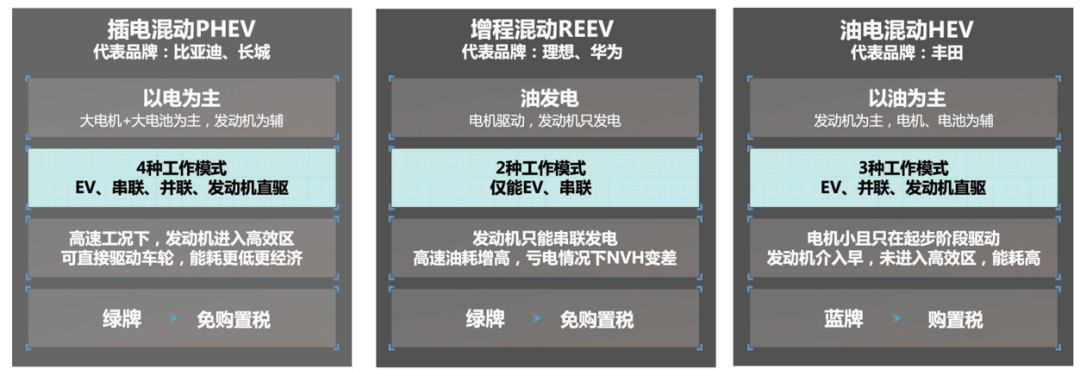PACK Product Development and Design (5): Types and Characteristics of New Energy Hybrid Vehicles
![]() 06/19 2025
06/19 2025
![]() 526
526
Extended Range, Plug-in Hybrid, Mild Hybrid, Power-split Hybrid—what exactly do these terms mean? Are you feeling overwhelmed by the myriad of options? Let's delve into the world of new energy hybrid vehicles and demystify their types and characteristics.

1. Classification
(1) Based on Power Coupling Method

Extended Range Electric Vehicles (EREVs) are a subset of Plug-in Hybrid Electric Vehicles (PHEVs), where the series configuration allows the engine to act as a generator for the electric motor. Hence, EREVs are a type of plug-in hybrid.
(2) Based on the Degree of Power Mixing
(For gasoline-electric hybrid vehicles with varying ratios of gasoline and electric energy)

Known for their fuel efficiency, gasoline-electric hybrids are favored by Japanese automakers, exemplified by the Toyota Prius, Levin, and Corolla. Unlike these, PHEVs and EREVs boast a higher electric/gasoline ratio exceeding 50%, qualifying them as new energy vehicles and eligible for green license plates.

(3) Based on Energy Replenishment Methods
(Whether external charging is possible)

PHEVs feature large battery capacities and high energy densities, whereas Hybrid Electric Vehicles (HEVs) have smaller batteries primarily used to assist the engine during start-up, acceleration, and regenerative braking.
2. Plug-in Hybrid Electric Vehicles (PHEVs)
PHEVs, with their larger batteries, qualify for green license plates if they offer an all-electric range of over 50km. They offer the versatility of electric-only, hybrid, and gasoline-only driving modes, combining the best of both worlds.
While their electric-only range might be slightly less than EREVs, PHEVs consume less fuel on highways due to their ability to drive in parallel or use the engine directly, resulting in lower overall fuel consumption.
Advantages: Eligible for new energy subsidies and green license plates, no range anxiety, greater mobility.
Disadvantages: Require charging stations but not solely dependent on them, higher fuel consumption post-battery depletion.
Representative Models: BYD DM-i, Geely EM-i

3. Extended Range Electric Vehicles (EREVs)
EREVs, also known as series plug-in hybrids, can be seen as electric vehicles with an additional 'fuel-powered power bank'. They offer a driving experience akin to pure electric vehicles, characterized by quietness, smoothness, and rapid power response.
Since the engine doesn't directly drive the wheels, no transmission is required, and the wheels are driven solely by the electric motor.
EREVs excel in fuel efficiency during medium and low-speed driving but suffer from high fuel consumption at high speeds due to secondary energy conversion losses.
Representative Models: Lixiang ONE, L7, L8, L9, AITO, Leapmotor
Despite being deemed outdated and inefficient by experts, consumers have spoken with their wallets, with brands like Lixiang, AITO, and Leapmotor achieving remarkable sales success.

Summary
1. PHEVs offer four operating modes, including EV and series modes found in EREVs, making them more comprehensive and advanced.
2. Under high-speed conditions, EREVs' engines drive a generator to produce electricity, which is then supplied to the drive motor, involving multiple energy conversions and resulting in lower efficiency. Conversely, PHEVs' engines can directly participate in driving, eliminating 'middlemen' and achieving higher efficiency and lower fuel consumption.

Which type do you think is best suited for Chinese consumers at present? Share your thoughts in the comments below!
Disclaimer: Due to personal limitations, any errors are unintentional. This article is for educational purposes only. Some images and text are sourced from the internet. Should there be any copyright issues, please inform us promptly for immediate removal. No commercial use intended!






